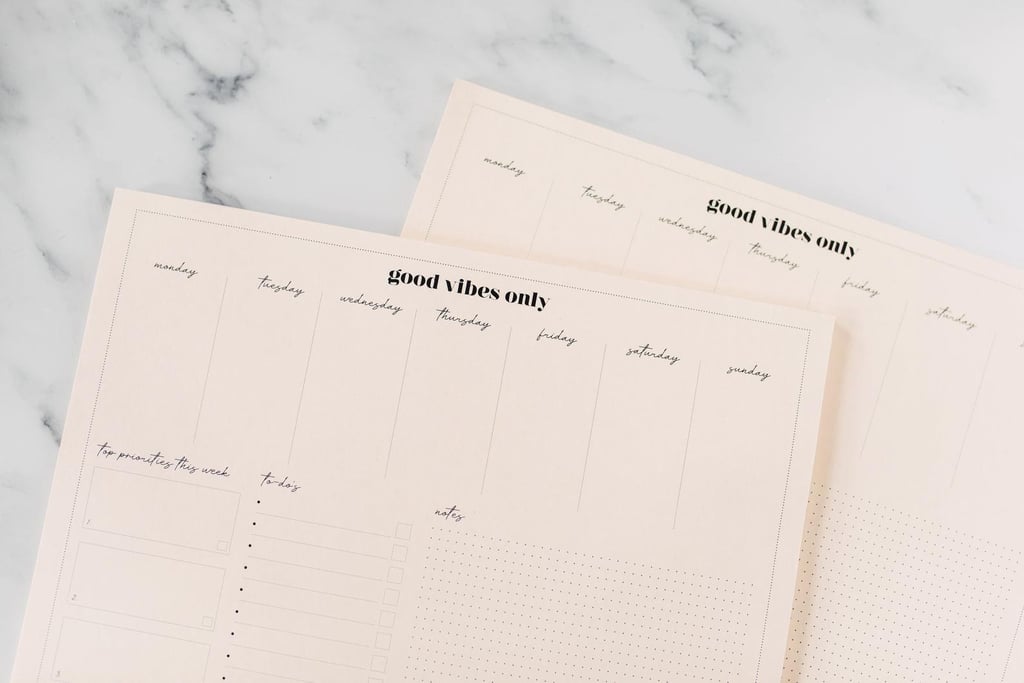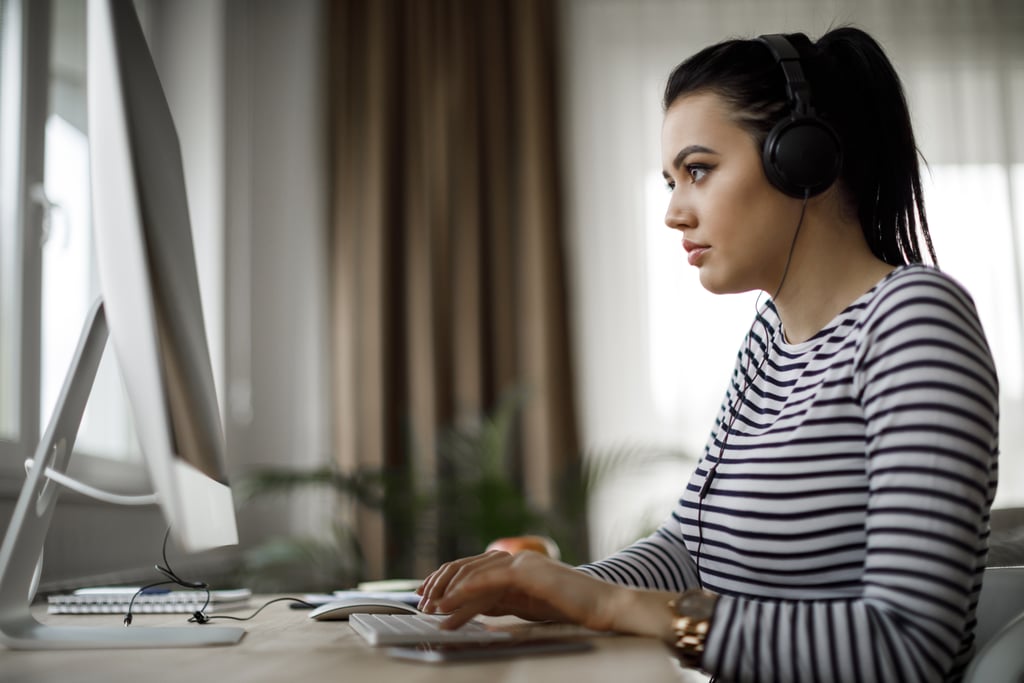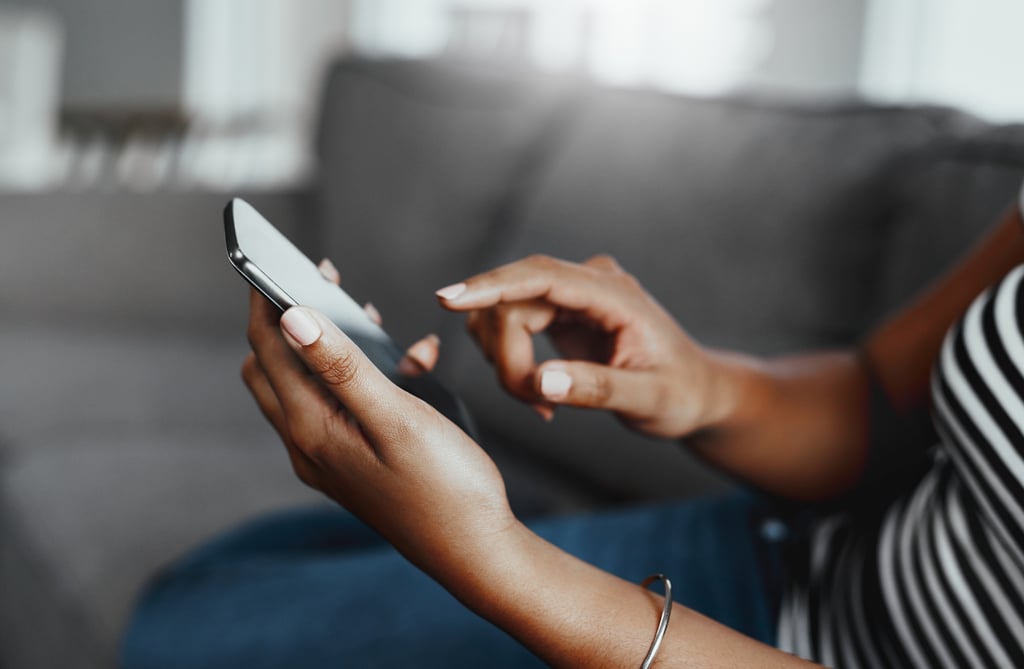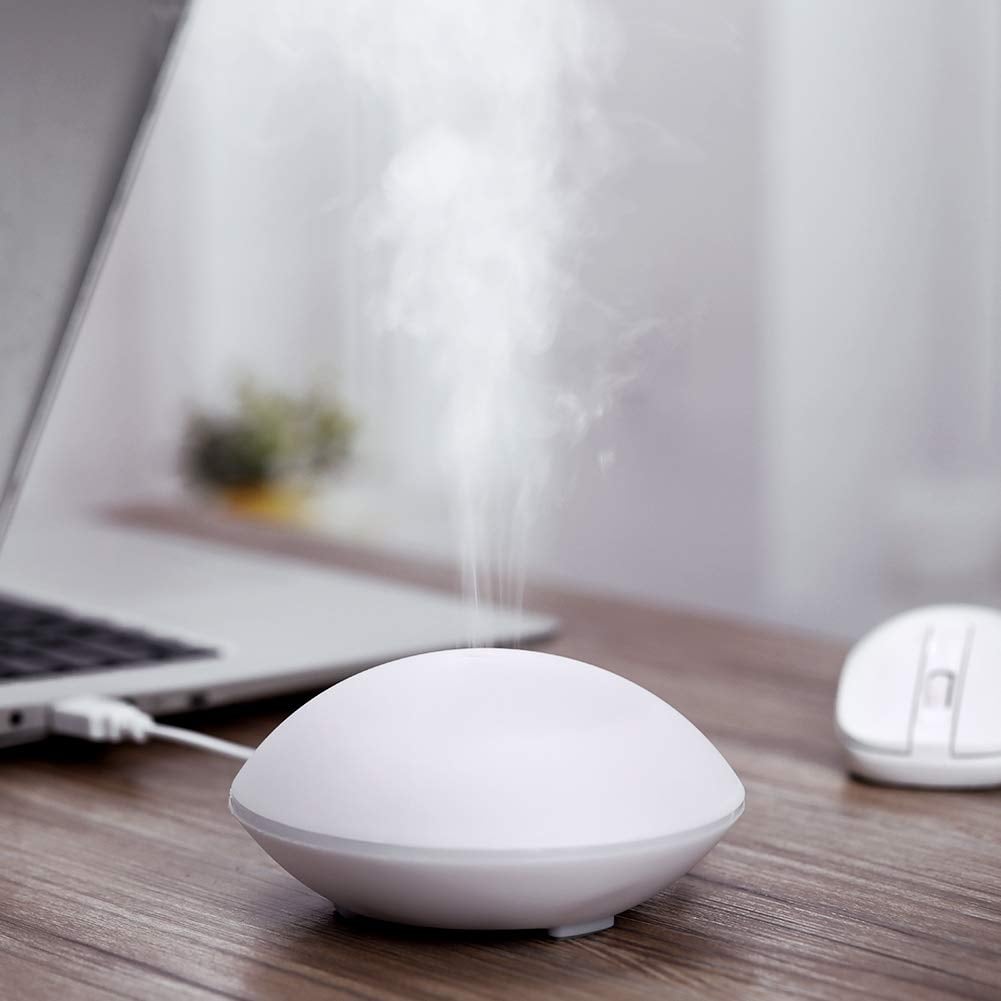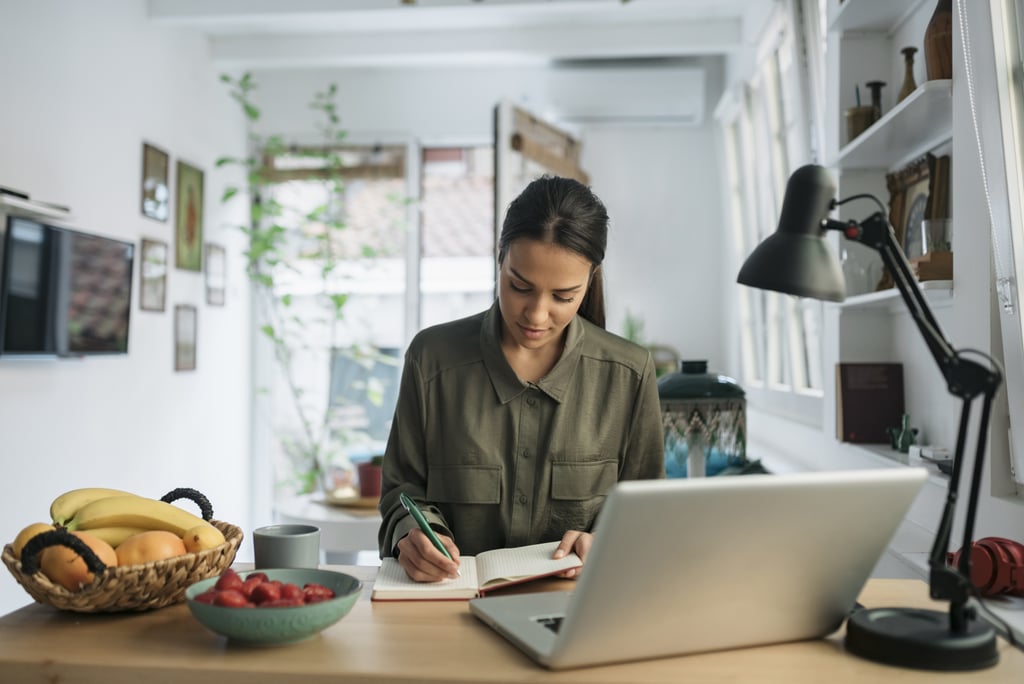Figuring out how to stay focussed and organised while working from home [1] is hard enough. Doing so with ADHD [2] requires a few extra tips for staying productive. The lack of a structured office environment has thrown off pretty much everyone who's had to transition to working from home during the COVID-19 pandemic. Toss in an attention-deficit disorder and you've got a distraction-laden cocktail that's not exactly conducive to success — in fact, it can start to feel near impossible to get anything done.
ADHD symptoms are generally lumped into three categories: inattentive, hyperactive, and a combination of the two [3]. Adults generally present with inattentive symptoms, while children can present with any of the three. "On the inattentiveness side, this can be seen through being easily distracted, having a short attention span, lack of attention to detail, clumsiness, forgetfulness, and other similar issues," explained Pete Bailey, MD, a family practice physician and expert contributor for Test Prep Insight [4]. This is the category generally thought of as ADD, a now-outdated term. "On the other hand, the hyperactivity symptoms that are typically experienced with ADHD include impulsiveness, fidgeting, fast and incessant talking, impatience, and other similar symptoms," Dr. Bailey told POPSUGAR. "With respect to individuals with ADHD that are working from home due to the pandemic, it can be especially difficult to stay focussed."
As someone with diagnosed ADHD who was working from home even before COVID, I've had a little extra time to test out what works — and what doesn't — to help keep me focussed [5] and productive. Though of course not a replacement for professional treatment, here are some additional steps I've taken to navigate working from home.
Practice Morning Meditation
People seem to like to throw meditation at just about any problem, but there's good reason for it. Meditation can help you feel grounded, set your intentions for the day, harness your focus and energy, and it's been found to decrease symptoms of ADHD [6]. Taking time daily to simply sit with myself in comfortable, zen tranquility has been one of the most transformative breakthroughs in my journey with an attention-deficit disorder — especially while trying to work from home with multiple people in the house all day.
I'll admit — at first, I had no idea what I was doing. Meditation seemed like a foreign language that I could not translate, much less integrate into my daily life. That's why they call it a practice, though: you get better the more you do it. It can certainly be a little intimidating at first, which is why I recommend listening to a guided meditation with headphones. There are plenty to choose from on YouTube [7], as well as dedicated meditation apps. There's a meditation for just about everything you can think of, but some of my most successful meditations for ADHD include those focussed on grounding, intention setting, gratitude, and productivity.
Write Everything Down on a Desk Pad
The National Institute of Mental Health notes that people with ADHD often struggle with forgetfulness, lack of organisation, and time management [8], and are easily distracted by impulsive thoughts. This can make it extremely difficult to complete tasks from start to finish without getting distracted by something else, and when you're working from home, inevitably, there will be more of these distractions.
I'm a huge proponent of keeping all sorts of notebooks, journals, and planners, but even these are only so helpful. I've become exponentially more productive by using a weekly notepad that sits on my desk at all times. This works better than a journal or a planner because it can't be closed, put away, and forgotten about — which is essential for people with ADHD, for whom objects that are out of sight are often out of mind [9]. My desk pad is always sitting out ready for any spur-of-the-moment thoughts that tend to slip away if I don't write them down immediately.
If your symptoms also manifest as organisation difficulties, I suggest a desk pad like this Good Vibes Only Weekly Notepad [10] ($16) on Etsy, which has multiple areas for note-taking. These sections include a weekly calendar, a top priorities section, a to-do list, and a general notes section, making organisation and prioritising tasks relatively easy.
Wear Noise-Canceling Headphones
Outside stimuli become a lot less distracting when you can't hear them. Using noise-canceling headphones is a highly effective way to focus attention on the task at hand and block out any distractions. I use mine even when I'm not actually listening to anything — I find the noise-canceling effect incredibly helpful to stimulate concentration on its own.
When I do play music or sounds, I focus best with either white noise or binaural beats (more on that later). You have to be mindful of what you're playing in the background, because these sounds could easily hinder your concentration. According to Healthline, you may want to avoid anything with lyrics in a language you understand [11], as this can be more distracting. The same goes for music that's too loud or fast-paced, and songs you either really like or really dislike.
Listen to Binaural Beats
When I'm struggling a little extra to focus or have a task that's particularly demanding of my attention, I turn to binaural beats. Binaural beats work by introducing two different sound frequencies in each ear. This causes the brain to produce a third "phantom" frequency made up of the difference in the initial two. According to a 2016 study in PLoS One, this phantom tone "can be manipulated for non-invasive brain stimulation [12]."
Participants in a 2010 pilot study reported improvement with homework problems [13] due to inattention after listening to binaural beats for three weeks. While the results concluded that there wasn't a significant reduction in symptoms, I, like the study's participants, certainly find an increased ability to focus for longer periods of time. However, if you have certain medical conditions, such as a history of seizures [14], you should consult your doctor before listening to binaural beats.
Improve Focus With Aromatherapy
People swear by essential oils for everything, so it should come as no surprise that there are several that are thought to improve symptoms of ADHD [15]. Personally, I've noticed a difference in my ability to concentrate, energy and stress levels, mental clarity, and mood when I diffuse essential oils like orange, bergamot, frankincense, and clary sage.
A USB desktop diffuser, like the BBSKIN Mini Kids USB Essential Oil Diffuser [16] ($15), serves as a visual reminder to actually use the diffuser every day when I sit down at my desk to work (there's that object permanence again).
Other scents that may benefit people with ADHD include vetiver and rosemary. A study in the Journal of Intercultural Ethnopharmacology concluded that vetiver essential oil may improve alertness and task performance [17]." Similarly, a study published in Therapeutic Advances in Psychopharmacology found that rosemary had a positive effect on cognitive performance [18].
Work in Shorter Intervals and Take Breaks
The Pomodouro technique is a time-management strategy that breaks work into shorter intervals [19]. "Setting a timer is a great idea because it can remind you to start or end your day, take breaks, and will motivate you to stay on task," explained Rashmi Parmar [20], MD, a psychiatrist with Community Psychiatry [21], California's largest outpatient mental health organisation.
"Individuals with ADHD have what is called 'time blindness,'" Lauren Powell [22], PsyD, a Georgia-based clinical psychologist, told POPSUGAR. "In time blindness, the ADHD individual can easily become distracted after a short period of time and lose track of the task at hand, resulting in a lack of productivity. On the opposite spectrum, the individual with ADHD can become hyperfocussed on an activity and not recognise that time is passing."
Dr. Powell suggests setting a timer to work for a specific period of time, like 25 minutes, then taking a three- to five-minute break. "The more 25-minute time periods you work for, the longer your break can be," Dr. Powell explained, adding that breaking time into predictable periods helps to identify the passage of time.
While you can use your phone's timer or a specific app for time-blocking, this can also lead to more distractions and procrastination. I prefer using a table time cube like the Calidaka Cube Timer [23] ($12). The block has time settings for five, 15, 30, and 60 minutes and is activated simply by flipping one of the time intervals face-up.
Write a "Done" List
In addition to writing a regular to-do list, it's also important to recognise everything you actually did get done in a day — even if wasn't on your initial list. Life happens, and there may be a task you unexpectedly have to give your attention to, resulting in one or more unchecked boxes for the day. Our brains love ticking off completed tasks, so when this doesn't happen, it can leave us feeling unaccomplished and down on ourselves.
In fact, according to the Zeigarnik effect [24], we remember the things we still need to do much better than the things we've already done. So, even though you were productive in the task that came up unexpectedly, your brain will likely forget you even accomplished it, while also inducing guilt for not completing something else that was on the list. To combat this, come back to your list and write a new "done" or "completed" list with everything that you completed that day. It can even be as simple as brushing your teeth — the more boxes you get to check, the better!

